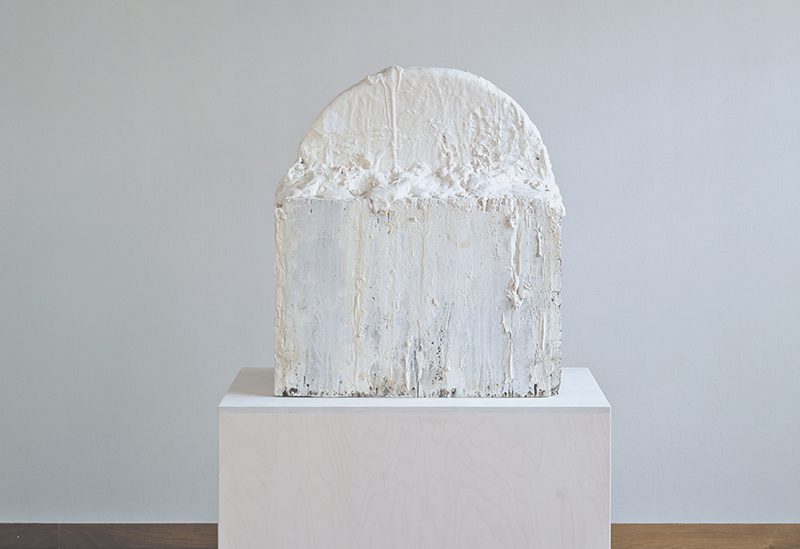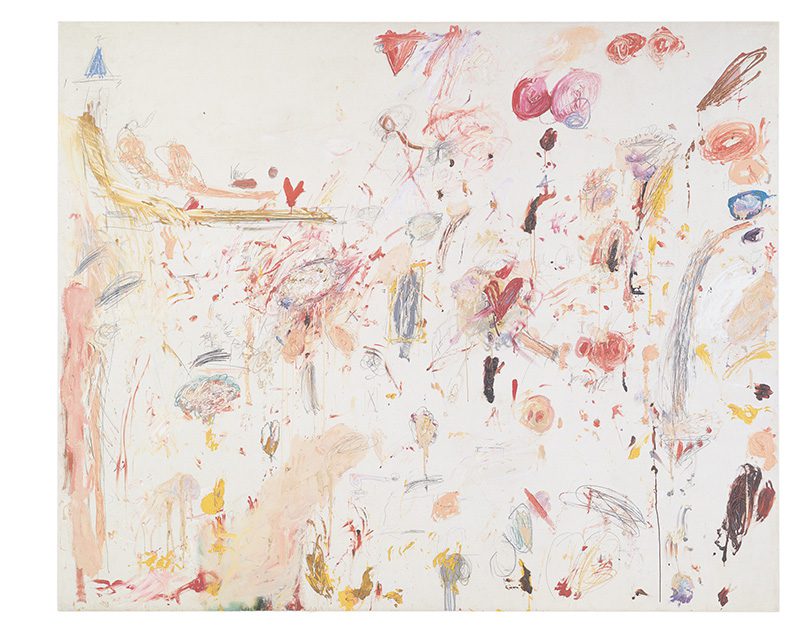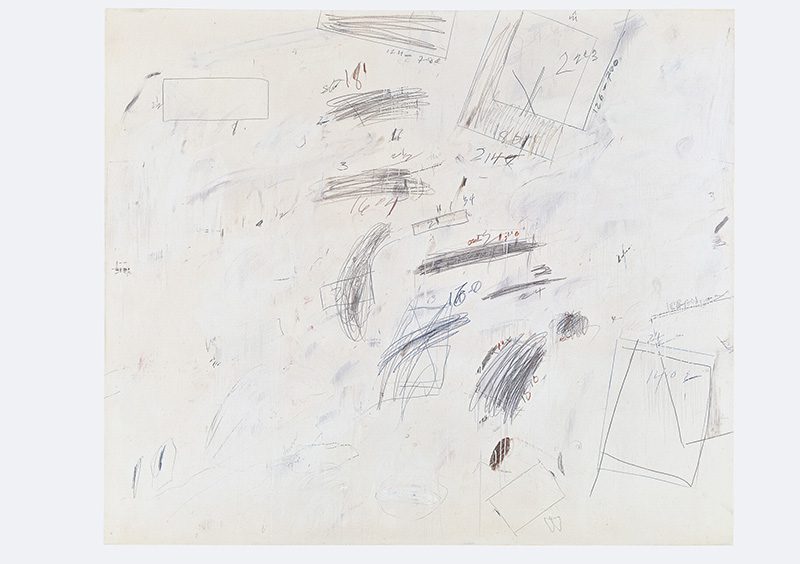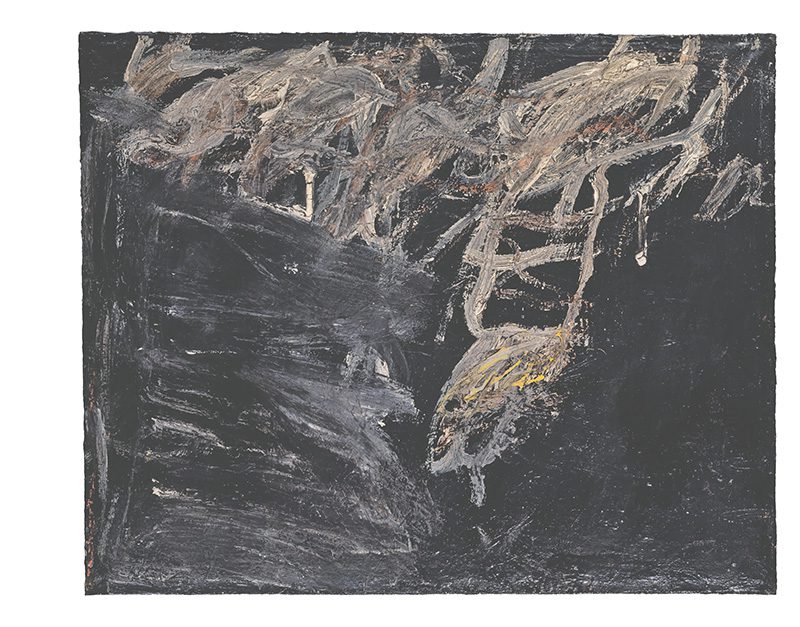ART-PRESENTATION:Cy Twombly-Painting & Sculpture
 Cy Twombly with his close friends Robert Rauschenberg and Jasper Johns, ranks among the leading exponents of a generation of artists who broke away from Abstract Expressionism in the ‘50s to devise their owndistinctive and highly influential visual idioms. Cy Twombly at a time when the center of the art world was shifting from Paris to New York, he decided to move in the opposite direction, settling down in Rome.
Cy Twombly with his close friends Robert Rauschenberg and Jasper Johns, ranks among the leading exponents of a generation of artists who broke away from Abstract Expressionism in the ‘50s to devise their owndistinctive and highly influential visual idioms. Cy Twombly at a time when the center of the art world was shifting from Paris to New York, he decided to move in the opposite direction, settling down in Rome.
By Efi Michalarou
Photo: Museum für Gegenwartskunst Archive
The exhibition “Cy Twombly-Painting & Sculpture” focus on the paintings of the ‘50s to ‘70s. The exhibition opens with a painting of inti-mate format dating from 1954, when Twombly was still in New York, as is evident from the compact painting and gestural brushwork both of which bespeak the influence of Abstract Expressionism. The paintings produced from 1957 onward, most of them in Rome, follow on seamlessly as the dark ground is abandoned in favor of brighter, bigger, landscape formats, liberally invested with rhythm by lines drawn in pencil, chalk or oil. Presented here for the first time is the painting “Untitled” (1969), that was painted on the Lago di Bolsena north of Rome and shows a fine, window-like opening, rendered as pencil hatching, in a field of white. The works “Untitled” and “Study for Presence of a Myth”, both painted in Rome in 1959, attest to Twombly’s efforts of that period to open up his painting. Alongside written words, his compositions also incorporate symbols like hearts or geometric shapes, scattered more or less evenly over the white primed canvas. The intricate pictorial elements are frequently accompanied by digits and numberings, which in their turn reference everyday life. The same is true of his practice of crossing out or painting over what is already there, which, while visualizing the act of deletion, at the same time emphasizes the painting’s materiality. Two important formal aspects that are especially prominent in Twombly’s “Arcadia” are in fact fundamental to his painted oeuvre as a whole: one is the work’s graphic character, arising primarily out of its combination of filigree lines and a white ground, and the other its incorporation of legible characters and even words. The transitions between these elements, moreover, are handled with great skill and have a powerfully formative impact on how the painting is made andviewed. Cy Twombly began working in the medium of sculpture as early as the mid ‘50s. In 1959, however, having produced just one group of works, he suspended all further sculpting for several years. Not until 1976 did Twombly return to the creation of three-dimensional objects. With their creative reworking of what, in most cases, were found objects, these typify his sculptural method. The objects themselves are often humdrum and unspectacular and conspicuously joined together by plaster, nails, or wire so that a distinctive modeling idiom unfolds. The two sculptures “Untitled” (1985) and “Thicket (Thicket of Ur)” (1990-99) belong to a later phase and clearly exemplify the salient characteristics of Twombly’s work as a sculptor.
Info: Curator Bernhard Mendes Bürgi, Museum für Gegenwartskunst, St. Alban-Rheinweg 60, Basel, Duration: 12/9/15-13/3/16, Days & Hours: Tue-Sun 10:00-18:00, www.kunstmuseumbasel.ch



